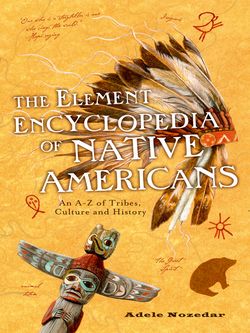Читать книгу The Element Encyclopedia of Native Americans: An A to Z of Tribes, Culture, and History - Adele Nozedar - Страница 101
CAYUSE
ОглавлениеOf the Penutian language group, the original meaning of the word Cayuse has been lost in the mists of time. However, because of the tribe’s particular skill in breeding horses and also in dealing them, their name has become synonymous with that of a particular small pony that they bred. The Native American name of the Cayuse is Waiilatpu. Associated with the Nez Perce and Walla Walla, the Cayuse lived along the Columbia River and its tributaries from the Blue Mountains as far as the Deschutes River in southeast Washington and northeast Oregon.
The Cayuse lived in a combination of circular tentlike structures and rectangular lodges. Extended families made small bands, each with its own headman or chief. The horses that became such an important part of the life of the tribe were introduced to them in the early part of the 18th century. Trading was not restricted to horses, though; the Cayuse bartered with the coastal tribes items such as buffalo blankets for shells. Later, they would trade with the white men: furs for guns and tools.
The Cayuse War of 1847–1850 was ignited by an outbreak of one of the European diseases for which the Native American tribes had no immunity: measles. The disease was first contracted by the Cayuse children who attended the mission school, and it spread to the adults.
The people who had started the mission school were not popular, and it seems that they had made little attempt to establish good and meaningful relationships with the Cayuse, with whom they had lived and worked for ten years. Marcus Whitman and his wife, Narcissa, were Presbyterians and had started the Waiilatpu Mission in 1836. The couple took little notice of the traditional ways and customs of the Cayuse and were zealous in their pursuit of converts. Moreover, it was rumored that they had made money for themselves from resources which should have belonged to the Cayuse: furs and land sales.
At the outbreak of measles, then, a chief and another Cayuse visited the mission in search of medicine, already angry with Whitman since, as well as any other grudges they had against him, they blamed the mission for the disease. Whitman was attacked and killed. Shortly afterward, the angry Cayuse attacked again, killing Narcissa along with ten other white people.
An army was organized by Oregon County officials, who retaliated by raiding a Cayuse settlement and killing some 30 people. The Natives in the area, including the Walla Walla and the Palouse, allied with the Cayuse against the Oregon army. Cornelius Gilliam, the army leader, was shot by his own gun and his troops fled. In the meantime, the two Cayuse who had visited the mission for the medicine, Tomahas and Tilokaikt, had fled immediately after the incident. Tired of hiding, after two years they gave themselves in, hoping for mercy. But they were sentenced to death by hanging.
The Cayuse uprising caused change in Oregon, with new forts and military posts being built; this in turn exacerbated mistrust between the Natives and the white people, which led to more wars. In time, the Cayuse were forced onto a reservation in 1853, in northeastern Oregon and southeastern Washington. Whitman was honored by having a town named after him in Washington.
